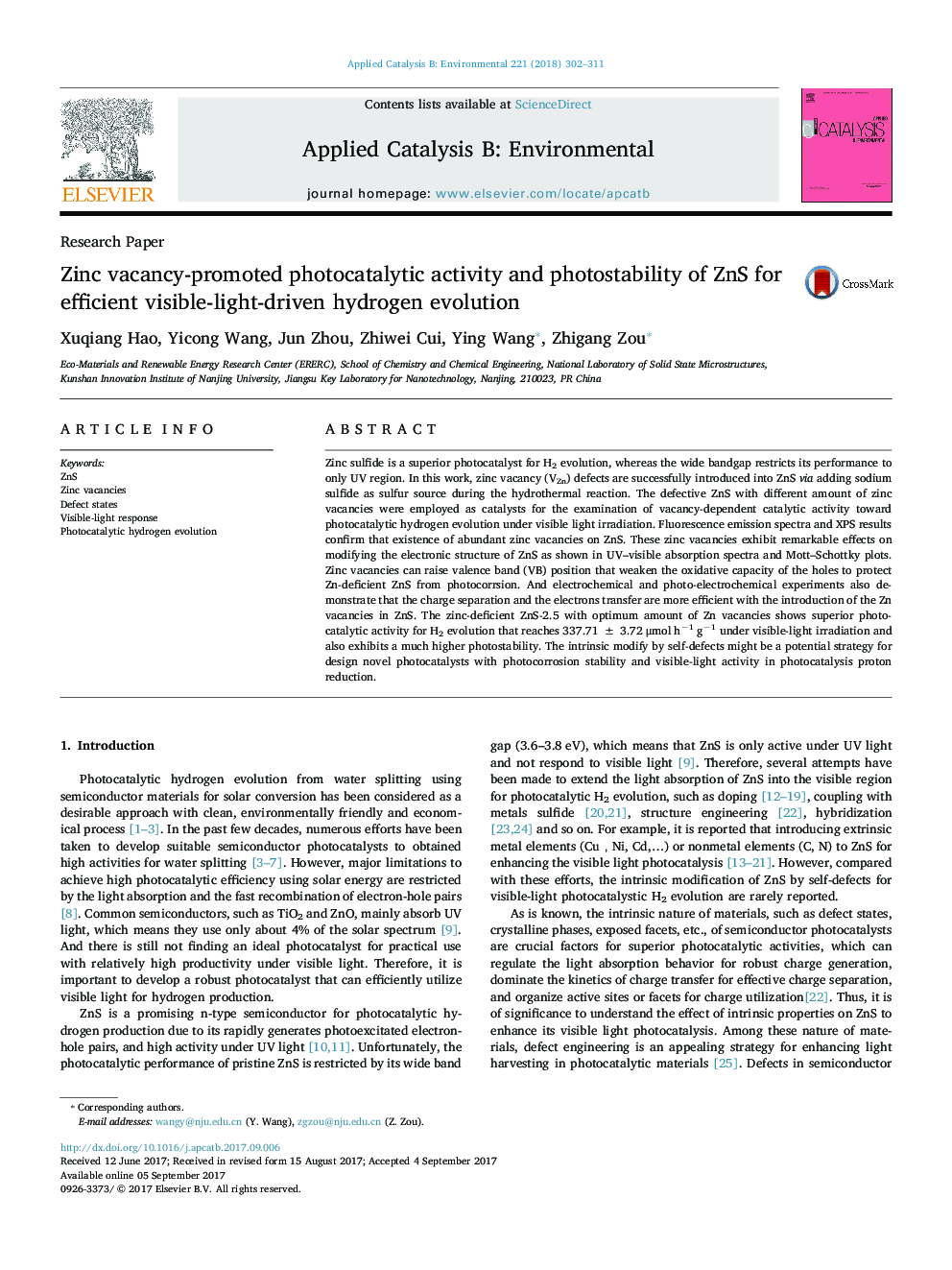| کد مقاله | کد نشریه | سال انتشار | مقاله انگلیسی | نسخه تمام متن |
|---|---|---|---|---|
| 6453439 | 1418799 | 2018 | 10 صفحه PDF | دانلود رایگان |

- Zinc vacancies are successfully introduced into ZnS via adding sodium sulfide as sulfur source.
- Zn-deficient ZnS samples possess tunable band structures and are able to harvest visible light.
- Zn vacancy defects weaken oxidative capacity of the holes to protect ZnS from photocorrsion.
- Zn vacancies significantly enhance the photostability and visible-light photocatalytic activity of ZnS for H2 production.
- Zinc-deficient ZnS-2.5 shows superior visible-light photocatalytic H2 evolution activity that reaches to 337.12 μmol hâ1 gâ1.
Zinc sulfide is a superior photocatalyst for H2 evolution, whereas the wide bandgap restricts its performance to only UV region. In this work, zinc vacancy (VZn) defects are successfully introduced into ZnS via adding sodium sulfide as sulfur source during the hydrothermal reaction. The defective ZnS with different amount of zinc vacancies were employed as catalysts for the examination of vacancy-dependent catalytic activity toward photocatalytic hydrogen evolution under visible light irradiation. Fluorescence emission spectra and XPS results confirm that existence of abundant zinc vacancies on ZnS. These zinc vacancies exhibit remarkable effects on modifying the electronic structure of ZnS as shown in UV-visible absorption spectra and Mott-Schottky plots. Zinc vacancies can raise valence band (VB) position that weaken the oxidative capacity of the holes to protect Zn-deficient ZnS from photocorrsion. And electrochemical and photo-electrochemical experiments also demonstrate that the charge separation and the electrons transfer are more efficient with the introduction of the Zn vacancies in ZnS. The zinc-deficient ZnS-2.5 with optimum amount of Zn vacancies shows superior photocatalytic activity for H2 evolution that reaches 337.71 ± 3.72 μmol hâ1 gâ1 under visible-light irradiation and also exhibits a much higher photostability. The intrinsic modify by self-defects might be a potential strategy for design novel photocatalysts with photocorrosion stability and visible-light activity in photocatalysis proton reduction.
Zinc defects are successfully introduced into ZnS via adding sodium sulfide as sulfur source during the hydrothermal treatment. The band structures of Zn-deficient ZnS samples can be turned by varying the amount of sodium sulfide and able to harvest visible light and separate photoexcited charge carriers more efficiently as well as weaken oxidative capacity of the holes to protect ZnS from photocorrsion. Thus, the photostability and visible light photocatalytic activity of ZnS for hydrogen production are remarkably enhanced. Furthermore, the zinc-deficient ZnS-2.5 with optimum amount of Zn vacancies shows superior photocatalytic activity for H2 evolution that reaches 337.71 ± 3.72 μmol hâ1 gâ1 under visible-light irradiation.292
Journal: Applied Catalysis B: Environmental - Volume 221, February 2018, Pages 302-311